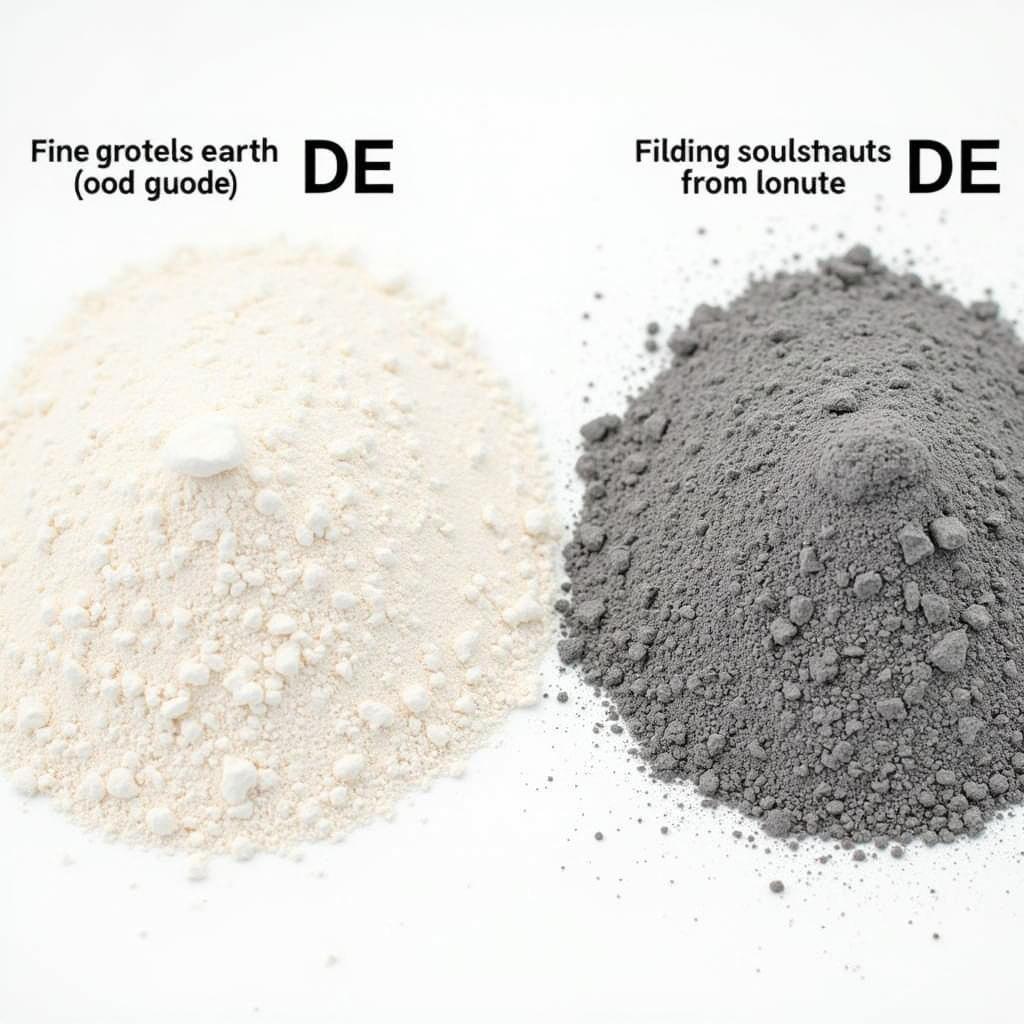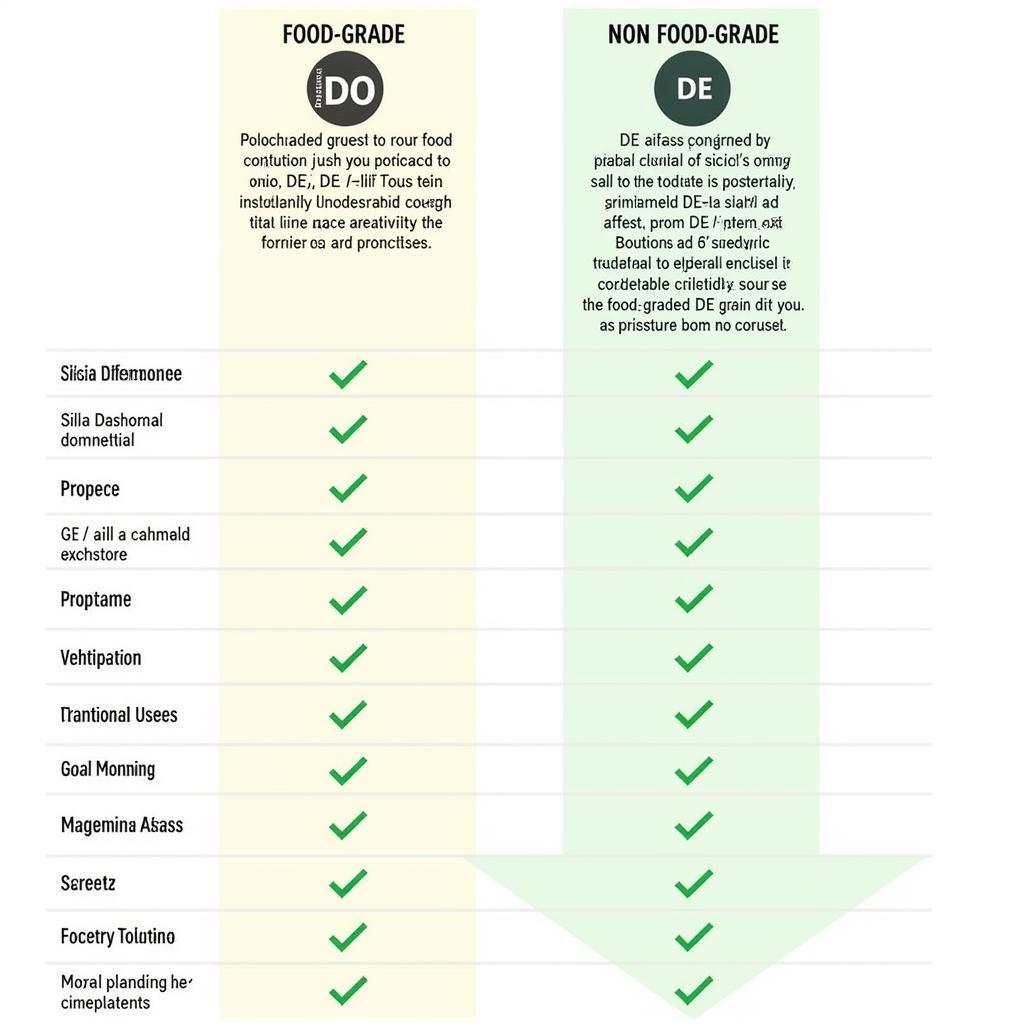Diatomaceous earth (DE) has gained popularity for various uses, from gardening to pest control. But did you know there are different types of DE? It’s true! And understanding the difference between diatomaceous earth food grade vs. not is crucial for your safety and well-being. Let’s dive in and explore the distinctions between these two types of DE, their applications, and how to choose the right one for your needs.
 Different types of diatomaceous earth
Different types of diatomaceous earth
What is Diatomaceous Earth?
Diatomaceous earth is a naturally occurring, siliceous sedimentary rock made from the fossilized remains of tiny aquatic creatures called diatoms. These diatoms have hard shells made of silica, the same material found in glass and sand.
When diatoms die, their shells accumulate in large deposits, forming diatomaceous earth. This substance is then mined, processed, and sold in various forms, including powders, granules, and even liquids.
Diatomaceous Earth Food Grade: Safe for Consumption
As the name suggests, food-grade diatomaceous earth is safe for human and animal consumption. It undergoes rigorous processing to remove impurities and heavy metals, ensuring it meets strict safety standards set by regulatory agencies like the Food and Drug Administration (FDA).
Uses of Food Grade Diatomaceous Earth:
- Internal Detoxification: Proponents claim food-grade DE can bind to and flush out toxins from the digestive system.
- Digestive Support: Some believe it can promote gut health by acting as a mild abrasive, cleansing the digestive tract.
- Nutrient Absorption: There are suggestions that food-grade DE may enhance the absorption of essential nutrients.
 Various uses of food-grade diatomaceous earth
Various uses of food-grade diatomaceous earth
Non-Food Grade Diatomaceous Earth: Not for Consumption
Non-food grade diatomaceous earth, also known as pool-grade DE, is not intended for human or animal consumption. This type of DE contains a higher percentage of crystalline silica, which can be harmful when inhaled or ingested. Pool-grade DE is typically used for industrial applications and, as its name suggests, in swimming pools for filtering water.
Uses of Non-Food Grade Diatomaceous Earth:
- Swimming Pool Filtration: Pool-grade DE effectively removes dirt, debris, and algae from swimming pool water.
- Pest Control: Its abrasive properties make it an effective insecticide, killing insects like ants, fleas, and bed bugs by dehydrating them.
- Industrial Applications: Non-food grade DE is used in various industrial processes, including filtration, absorption, and as an anti-caking agent.
Important Note: Never ingest or use non-food grade diatomaceous earth for any purpose other than its intended industrial or pool filtration applications. Always check product labels carefully to ensure you are using the correct type of DE.
How to Choose the Right Diatomaceous Earth
When choosing between diatomaceous earth food grade vs. not, consider your intended use:
- For Internal Consumption or Food-Related Uses: Always choose food-grade diatomaceous earth that meets safety standards.
- For External Applications like Pest Control or Pool Filtration: Opt for non-food grade diatomaceous earth.
 Choosing the appropriate diatomaceous earth
Choosing the appropriate diatomaceous earth
Diatomaceous Earth Food Grade vs. Not: A Summary
Understanding the difference between diatomaceous earth food grade vs. not is essential for ensuring your safety and using this versatile substance responsibly. Remember to choose the right type of DE based on your needs and always follow product instructions carefully.
Looking for high-quality, food-grade diatomaceous earth? Contact us at Phone Number: 02437655121, Email: minacones@gmail.com Or visit us at: 3PGH+8R9, ĐT70A, thôn Trung, Bắc Từ Liêm, Hà Nội, Việt Nam. Our dedicated customer support team is available 24/7 to assist you.